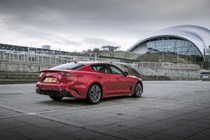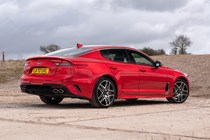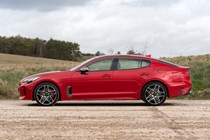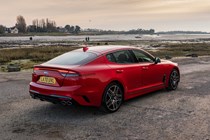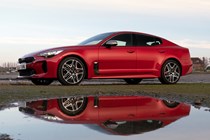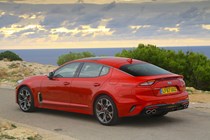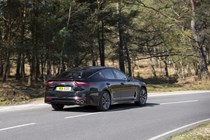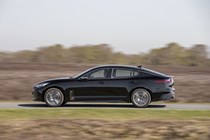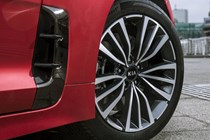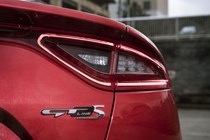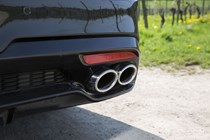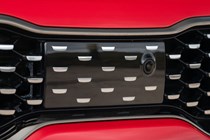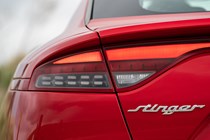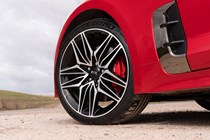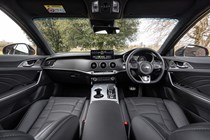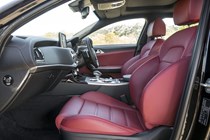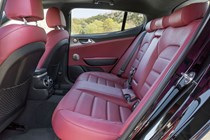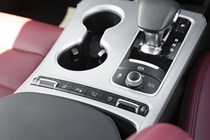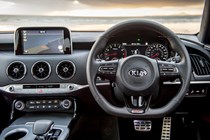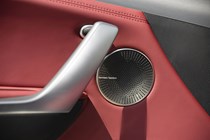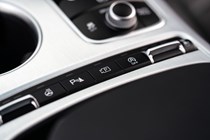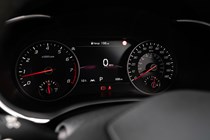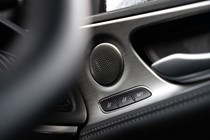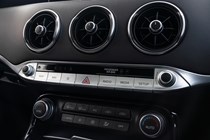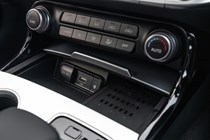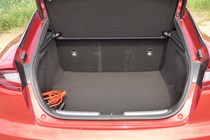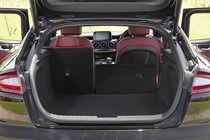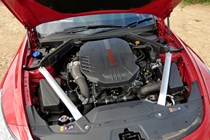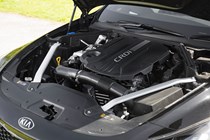Kia Stinger engines, drive and performance

- Only one engine available
- Provides strong performance
- Standard eight-speed automatic gearbox
What engine options are there?
There’s only one engine on offer in the Kia Stinger and it’s a bit of a whopper. What used to be the top-of-the-range unit is now the only one available, which is great news if you had your eyes on the 3.3-litre T-GDi twin-turbocharged engine.
It’s a strong, effortless engine with an impressive 0-60mph time, (even though most measure to 0-62mph instead), gaining speed with alarming ease and refinement.
The downside of this is that it’s not particularly sporty-sounding or exciting, at least compared with its BMW and Audi rivals.
However, this does mean that it’s relaxing and smooth when cruising around gently, offering up power when needed and staying quiet unless the accelerator pedal is depressed hard.
| Engine | Power and torque |
0-60mph time |
Top speed |
| 3.3-litre T-GDI | 365hp, 510Nm | 4.7secs | 167mph |
Gearbox options
If you’re after a manual gearbox in the Stinger then the bad news is that you can’t have one. The good news is that the standard fit eight-speed automatic is smooth on upshifts and provides reasonably swift manual override down-changes.
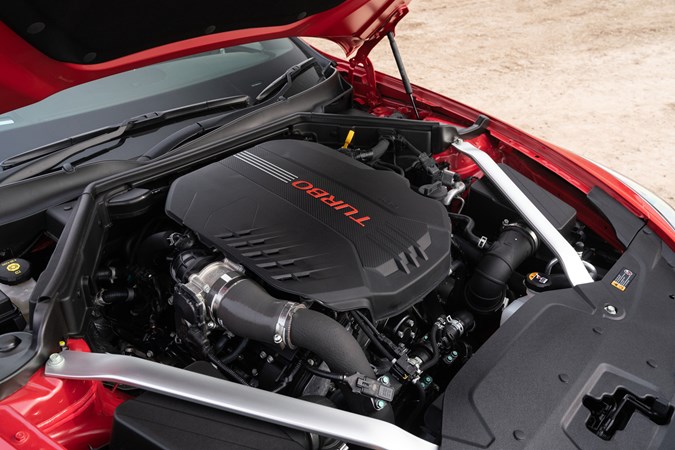
There can be a bit of a delay when suddenly pressing hard on the throttle, but pulling away from a standstill brings about reasonable responses. There’s less of a delay compared with some Jaguar Land Rover or Volkswagen/Audi Group products.
Be aware, however, that the transmission is plagued with an annoying flaw: despite the Stinger’s obvious leanings towards being a premium performance car, the automatic gearbox only stays in Manual mode when Sport or Sport Plus is selected. Otherwise it will revert back to Auto within 10 seconds, which can catch you out mid-corner sometimes.
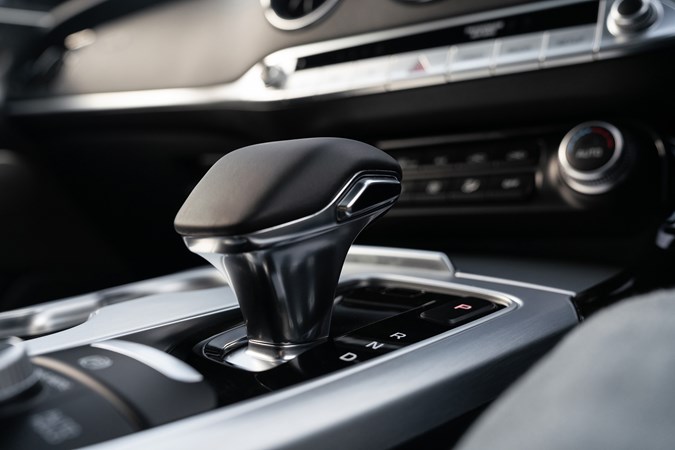
Engines no longer available
There were two additional engines available until 2020. The entry-level petrol engine consisted of a 247hp 2.0-litre T-GDi turbocharged unit capable of 0-62mph in 6.0 seconds and a top speed of 149mph. Torque is rated at 353Nm.
It’s a smooth, refined engine – if not terribly exciting – capable of launching the Stinger up to serious speeds in little time. There’s less outright torque than the 3.3-litre V6, but should you wish there’s enough incentive to rev it to the red line and extract maximum performance.
There was just the one diesel engine available in the Stinger – a 2.2-litre CRDi unit producing 200hp and 440Nm of torque. That means it’s good for 0-62mph 7.5 seconds and a top speed of 143mph.

How does it handle?
- Assured but lively handling
- Hides hefty weight well
- All models come with rear-wheel drive
One of the Stinger’s strongest facets, Kia has made its halo car handle like no other car it has ever made. Traction levels from the standard rear-wheel drive setup are strong, yet there’s a playful agility to the car which belies its significant kerb weight.
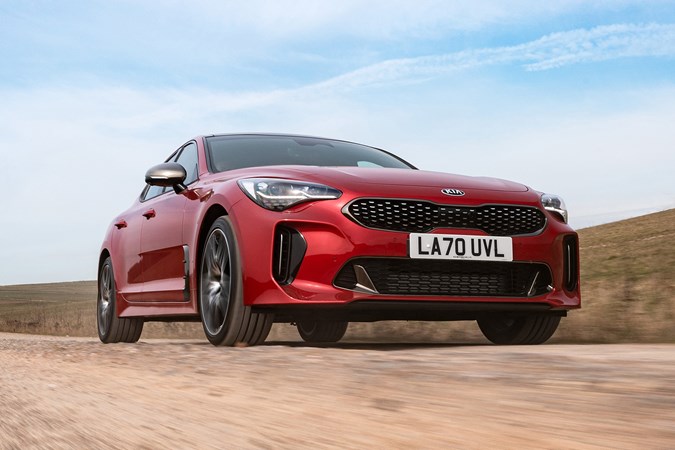
This is heavily dependent on the drive mode you are in, though, as Comfort, Normal and even Sport can feel like the safety systems are reigning in the Stinger’s performance so much it upsets the handling balance. Switch to Sport Plus, and the Stinger feels much more natural and balanced in response.
The steering is a little too light, which is great for long-distance comfort, but not quite involving enough for drivers. Push on harder in Sport Plus and the rear-end of the Stinger will slide out in the right conditions.
All-cars come with a limited-slip differential as standard which helps with performance driving and enables the car to be more precise when travelling quickly through bends. The switchable drive modes do make a notable difference to the way the vehicle goes, handles and rides – tweaking engine, gearbox, steering and power delivery settings to the driver’s preference.
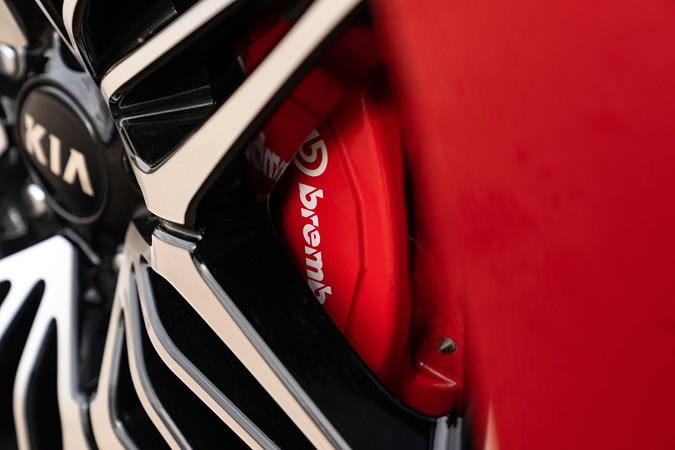
The brakes are strong, but the pedal feel might take a little getting used to, feeling a little light and requiring a lot more travel before they bite.







